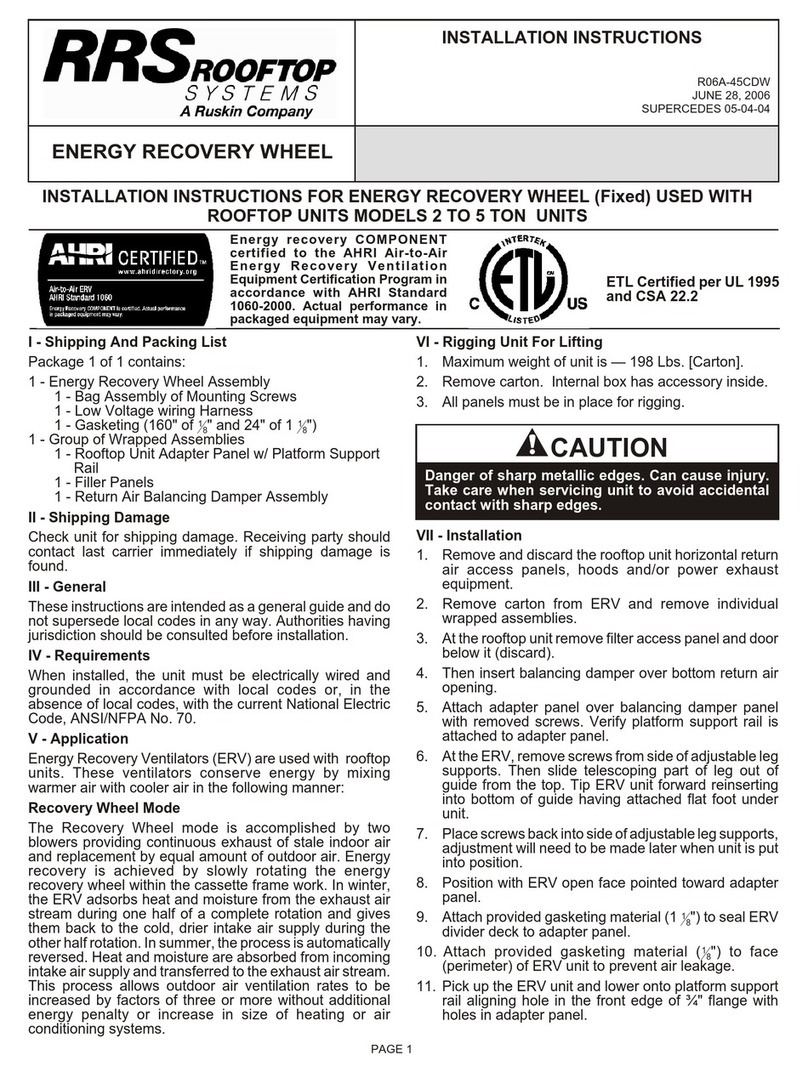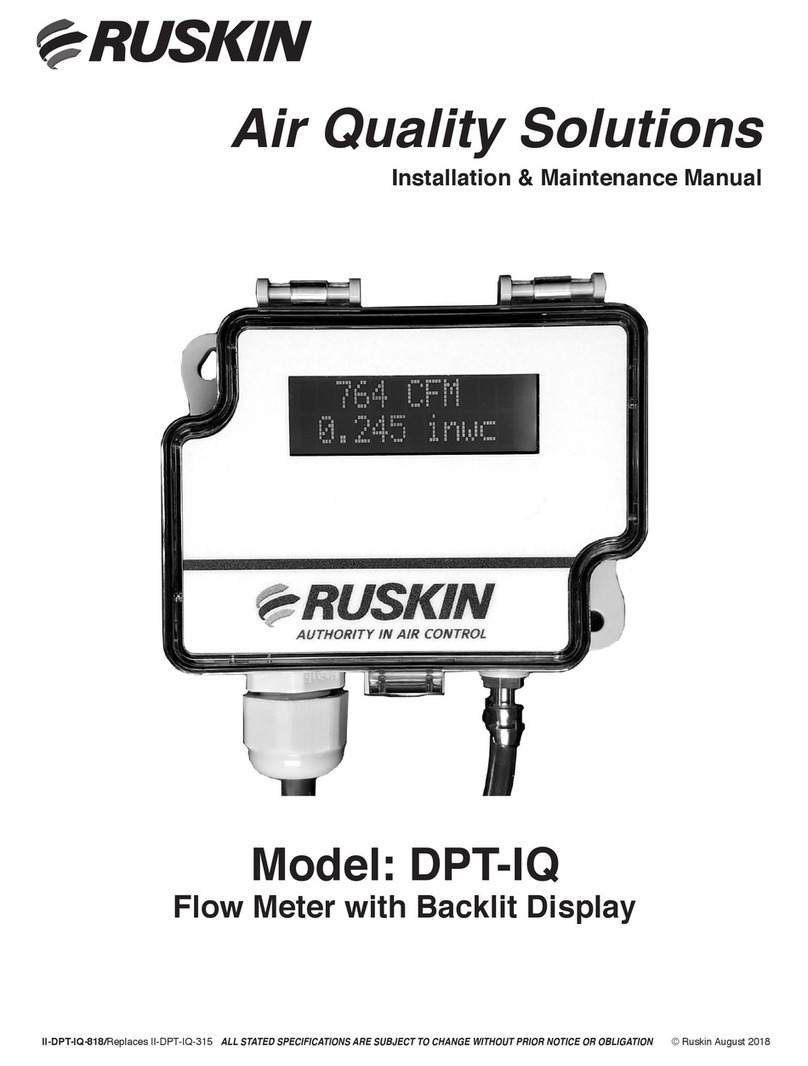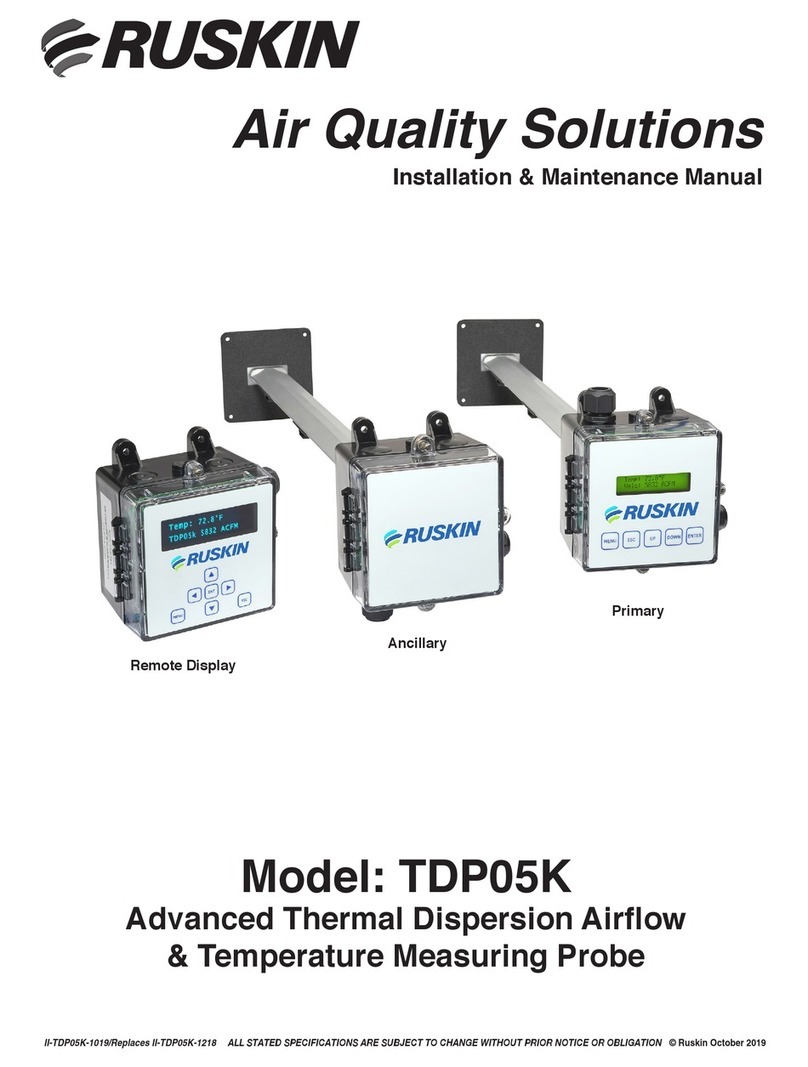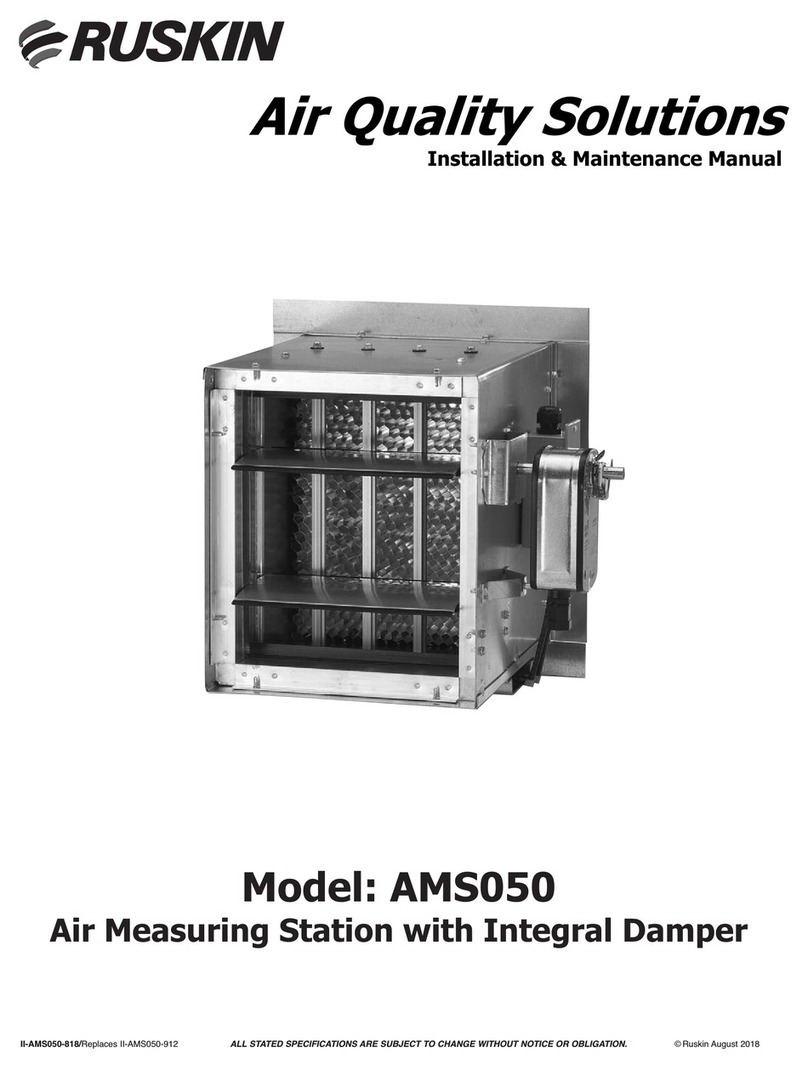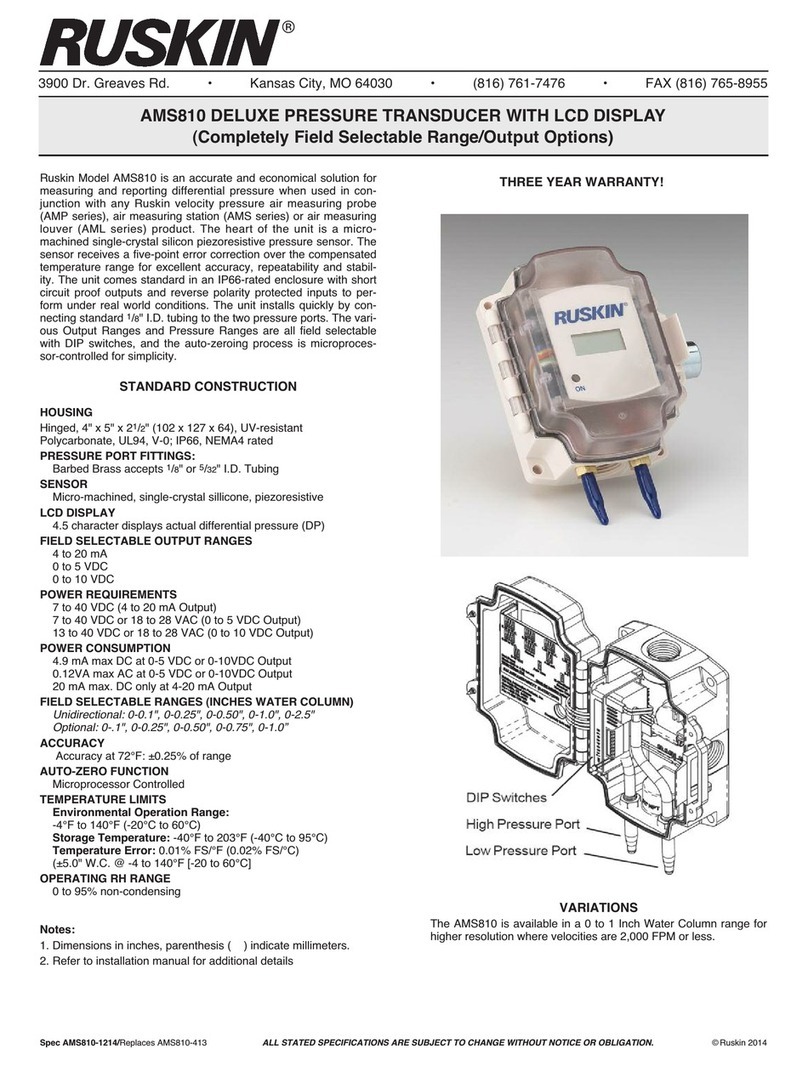
ALL STATED SPECIFICATIONS ARE SUBJECT TO CHANGE WITHOUT NOTICE OR OBLIGATION.Spec EFAMS-818/Replaces EFAMS-316 © Ruskin August 2018
FEATURES
• Ruskin thermal dispersion measurement technology provides
accurate, repeatable measurement from zero to 10,000 fpm.
• Aerodynamically Shaped, Surface Mount Fan nlet Sensors
• Multiple-Pivot Living Hinge Design
• LCD Screen on Transmitter
• Shielded CAT5e Cable with RJ-45 Connectors
Ruskin EFAMS helps satisfy the requirements for minimum outside
air as required by the following.
• LEED (USGBC)
• ASHRAE 62.1, ASHRAE 90.1 and ASHRAE 189.1.
• California Title 24
• nternational Mechanical Code ( MC)
• nternational Energy Conservation Code ( ECC)
VARIATIO S
Ruskin model EFAMS is available with the following variations at
additional cost.
• Longer communication cables (available in 10' [3.05m] incre-
ments up to 50' [15.24m])
• Dual inlet dual density (8 sensors total)
• 120 volt primary/24 volt seconday power transformer shipped
loose
EFAMS (shown on forward curve type
fan) with standard Router and Trans-
mitter displays Velocity or flow and
Temperature (Fan inlet bell by others)
Refer to Ruskin Installation and Main-
tenance manual for information on
other fan types.
APPLICATIO
The EFAMS is a highly accurate electronic thermal dispersion type
fan inlet air measurement device for reporting air flow and air
temperature. The EFAMS transmitter averages multiple velocity
and temperature readings from a minimum of two sensors located
in the fan inlet bell. The surface mount sensor design ensures the
lowest pressure drop in the industry when compared to other after-
market fan inlet air measurement devices. Each sensor circuit is
equipped with a heated and passive thermistor. Up to four inlet
sensors can be connected to one router. The router multiplexes the
sensor’s air flow and temperature information and sends this as a
digital signal to the transmitter for processing. Each Transmitter is
capable of averaging two routers and four sensors per router, to
arrive at the total measured air flow. The EFAMS transmitter, with
two-line, 16 character, configurable display shows both air flow and
air temperature with two corresponding, isolated analog outputs, for
ease of interface with any automation system.
STA DARD CO STRUCTIO
SURFACE-MOU T SE SOR E CLOSURE
Aerodynamically shaped, high impact ABS, with stainless sensor
cap. U.L. 94 flame rated housing conforms to the inlet bell
contour providing a low profile installation that reduces pressure
drop, and saves energy.
SE SOR DISTRIBUTIO
Two sensor circuits mounted opposite of each other.
SE SOR CIRCUIT (two standard, up to four per fan location)
Two hermetically sealed, heated thermistors.
Two hermetically sealed, ambient thermistors.
SE SOR ACCURACY
Airflow: ±3%.
Temperature: ±0.10° F (0.056°C).
SE SOR RA GES
Airflow Rate: 0-10,000 FPM.
Temperature: - 25° F to 140° F (-32°C to 60°C).
Humidity: 0-99% RH, non-condensing.
ROUTER U IT (one per fan location)
One microprocessor based multiplexer circuit.
Sensor/communications circuit.
All circuits encapsulated in electronic potting compound.
COMMU ICATIO CABLE
UL Plenum rated shielded CAT5e network cable (10' [3.05m]
standard).
RJ-45 Connectors with dust boot cover and gold plated pins.
Digital interface between router and transmitter.
CO TROL TRA SMITTER
Microprocessor based.
6" x 113/8" (152mm x 289mm) nominal control enclosure.
16x2 character LCD display (airflow, temperature & diagnostics).
Seamless "plug & play" connectivity to Router & 2-4 sensor circuits.
24VAC internally fused power supplied by others.
Velocity Output: Field selectable 4-20mA (Std.) or 2-10 VDC
using 500 ohm resistor.
Temperature Output: Field selectable 4-20mA (Std.) or 2-10 VDC
using 500 ohm resistor.
OPERATI G RA GE:
Temperature: -20° F to 120° F (-29° C to 49° C)
Humidity: 0-99% RH, non-condensing
POWER REQUIREME T
24 VAC transformer.
Dimensions in inches, parentheses ( ) indicate millimeters.
U.S. Patent
7,950,291
EFAMS ELECTRO IC FA I LET & TEMPERATURE MEASUREME T STATIO
www.ruskin.com • 3900 Dr. Greaves Rd. • Kansas City, MO 64030 • (816) 761-7476
